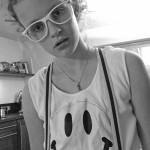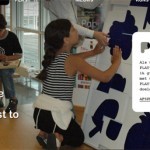Promised Eveline to be on the lookout for play stuff - moments of free-form play…
Play strategies within artistic practice
I’ve been thinking about the different ways ‘play’ is used in artistic practice, and was inspired by Mary Flanagan’s book on ‘Critical Play’. She came up with a number of possible categories. Trying them out for size here:
.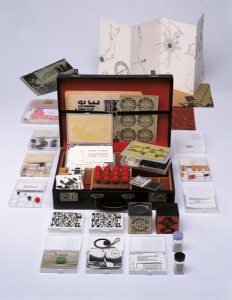 Subversion: turning things upside down, overthrowing a system, undermining an institution, event, object. A creative rather than a destructive act. Because they exist as rule systems, games are really ideally suited for subversive practices. Example: Fluxus games like George Brecht’s Fluxkits
Subversion: turning things upside down, overthrowing a system, undermining an institution, event, object. A creative rather than a destructive act. Because they exist as rule systems, games are really ideally suited for subversive practices. Example: Fluxus games like George Brecht’s Fluxkits
Intervention: direct actions that engage with places, issues, institutions. Artists seeking to open up a dialogue by transgressing a border in order to bring about a transformation. Example: Yoko Ono’s ‘Cut Piece
Disruption: a purposefull act that changes the way a particular set of rules, logic or paradigm is operating. Example: Gabriel Orozco’s ‘Horses Running Endlessly
Unplaying: enacting ‘forbidden’ or secret scenes. Reversing roles and revising traditional expectations.Example: Claude Cahun’s self portrait
One that I will add myself: interactivity and other forms of co-creation. Example: Ricardo Basbaum’s ‘Me – You: Choreographies, Games and Exercises’
Of course these are no watertight compartments, but these categories could be useful as a starting point for my taxonomy of the use of ‘play’ in artistic practice.
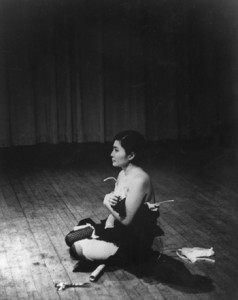
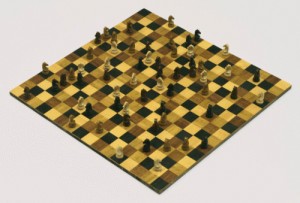 ‘
‘
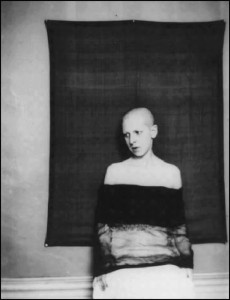
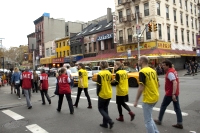
| « The Ambiguity of Play | <-- previous post | next post --> | Quotes on subversive games » |
|---|
